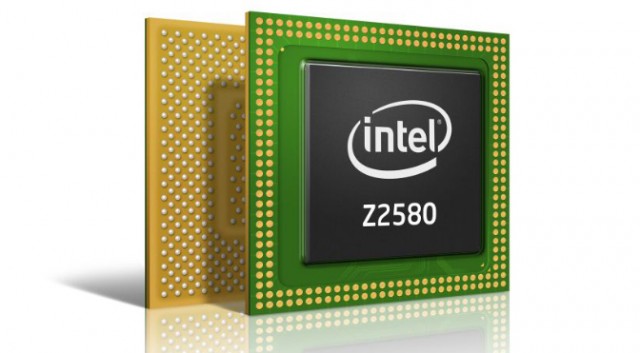Intel officially launched its new dual-core “CloverTrail+” Atom system-on-a-chip today at MWC in Barcelona. The CloverTrail+ is a direct successor to Intel’s first smartphone SoC, Medfield, but gets its name from the company’s tablet-focused CloverTrail platform. The Atom Z2580 dual-core processor is the top-of-the-line SKU in the new lineup, which you can see powering a mobile graphics rendering demo featuring Epic Citadel in the video above.
Intel’s new CloverTrail+ line still uses the same 32nm architecture of its predecessor, which means it likely won’t get significantly better power performance requirements (though Intel is claiming its software approach will actually help it beat ARM designs), but the chip should power significantly improved phone designs. Intel’s reference designs for the chip include its new Intel XMM 6360 modem, which can theoretically take advantage of full HSPA+ 42Mbps network speeds. It also has an improved GPU (hence the demo above), packs in 2GB of RAM, up to 256GB of NAND flash storage, a 16MP camera with a 2MP front-facing shooter, and Android 4.2.
Intel isn’t matching up to the competition on paper, but it’s pushing dual-core mobile chips to their max speeds, whereas most quad-core designs have to be clocked down to maintain optimal operating temperature and power consumption. CloverTrail+ phones are expected to ship in late 2013, and we’ll likely see much more actual OEM hardware based on the tech, as compared to last time around with Medfield. Intel is still hurting by using the 32nm construction vs. the 28nm format employed by its biggest competitors Qualcomm and Nvidia, both of which also now offer integrated LTE modes with their latest gen SoC designs.
But Intel’s real splash will come when Bay Trail debuts, which is a 22nm full redesign of Atom, with native quad-core processing. That should give it the edge over its competitors when it comes to power consumption, as they’ll likely still be using 28nm designs. If Intel is going to take a serious run at mobile relevance, it’ll be with Bay Trail, not CloverTrail+, despite admirable improvements made with this generation.
